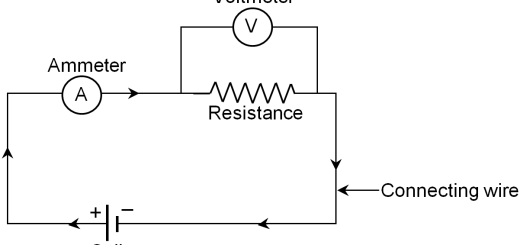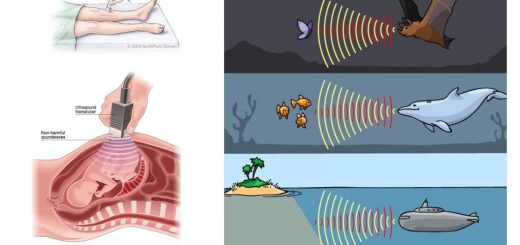Quantum physics, Blackbody Radiation and importance of studying emitted ray from different bodies
Quantum physics is the physics that allows us to study and explain scientific phenomena that might not be directly observed in our daily life especially when we deal with atomic and subatomic systems such as studying atomic spectrum and electronic phenomena on the level of the molecule such as studying chemical reactions.
Quantum physics
The classical physics explains everything in our daily life and our common experiences, but there is another branch which deals with a great collection of scientific phenomena that might not be directly observed in our daily life.
Quantum physics explains all phenomena involved in electronics which is the basic for all modern electronic and communication systems.
Quantum physics explains the chemical reactions on the level of the molecule which were photographed by Ahmed Zewail using a high-speed laser camera and such work entitled him to be awarded the Nobel Prize in Chemistry in 1999.
Quantum physics deals with several situations in the universe which classical physics can’t explain, especially when we deal with atomic and subatomic systems down to the subatomic scale.
Classical physics is the physics that allows us to interpret the daily observations and common experiences such as studying waves as sound, light, heat & electricity with their properties.
There are different types of electromagnetic waves which may differ in frequency and wavelengths, The light is one of the types of electromagnetic waves and posses the common features of waves such as:
- Reflection, refraction, interference and diffraction.
- It does not need a medium to propagate.
- It propagates in space at a constant speed c = 3 × 108 m/s.
Blackbody radiation
The blackbody is a body which does not exist in nature but it can be likened as enclosed cavity which has a small hole, the inside of the cavity appears black because all of the radiation within the cavity remains trapped due to multiple reflections and the larger part of the radiation is absorbed while only a small part of it leaks out which is called ” Blackbody radiations “.
A blackbody is a body that absorbs all the radiations with different wavelengths which fall on it (perfect absorber) and emits these radiations wholly (perfect emitter).
Glowing bodies and non-glowing bodies
The bodies that emit light heat are called hot bodies while the bodies that absorb the radiations and remit them are called non-glowing bodies such as the Earth, Examples of glowing bodies such as Lamp filament, Burning a piece of coal, Sun and stars.
Glowing bodies are bodies which emit light and heat radiations such as the Sun, Non glowing bodies are bodies which absorb the radiation and remit them such as the Earth.
The light emitted from each source of the glowing sources (Sun, stars, burning of charcoal and glowing incandescent lamp), light varies by varying the temperature, Because the glowing sources do not emit all the wavelengths equally, but the intensity of radiations varies with wavelength and the wavelength which has the maximum radiation depends on the temperature of the source.
The relation between the intensity of radiations and the wavelength (Plank’s distribution)
Planck managed to explain the relation between the intensity of radiation and the wavelength by studying the emitted radiation from different sources, The graphical curve representing this relation is called Planck’s curve.
Planck’s curve is a curve that represents the graphical relation between the intensity of the radiations and the wavelength of the emitted spectrum.
The description of Planck’s curve:
- The intensity of radiation tends to zero at high wavelengths as well as low wavelengths.
- The intensity of radiations tends to be the maximum value at a certain value of wavelength (λm).
- As the temperature increases, the total intensity of radiations increases and the wavelength (λm) decreases.
- This curve is repeated with all hot bodies that emit a continuous radiation spectrum.
The temperature at the surface of the Sun (T = 6000 K) and this makes the maximum intensity of radiations (the peak of the curve) lies in the visible spectrum, thus, the wavelength at peak (λm = 0.5 μm = 500 nm), which is within the visible range, thus, almost 40 % of the total energy emitted by the Sun is in the visible range and almost 50% is heat (infrared radiation), while the rest is distributed over the remaining spectrum.
The temperature of the incandescent lamp is (T = 3000 K) which makes the wavelength at the park at (λm = 1 μm = 1000 nm = 10−6 m = 1 Micron), from such lamps we get nearly 20% visible light and most of the rest (80%) as heat.
The temperature of the Earth is far less than that of the Sun as the Earth is forming non-glowing bodies which absorb the radiation from the Sun and remits it, So, the maximum intensity of the radiation lies within the infrared region at a wavelength (λm = 10 μm = 10000 nm).
From the previous observations, we find that: The wavelength (λm) which is the peak of the curve increases by decreasing the absolute temperature, so, The wavelength (λm) at which the radiation intensity is maximum, is inversely proportional to the absolute temperature of the glowing body which is called (Wien’s law): λm ∝ 1/T.
Wien’s law: The wavelength (λm) accompanying the maximum intensity of radiation is inversely proportional to Kelvin temperature of the glowing source.
( λm )1 / ( λm )2 = T2 / T1
We can not explain these observations using classical physics, because from classical physics Since the radiations are electromagnetic waves, the intensity of radiation increases as the frequency increases (decreasing wavelength) while the intensity of radiations decreases at high frequencies (short wavelengths).
Planck’s interpretation (year 1900) for the blackbody radiation
We can explain the bell shape of radiation, Planck could explain the blackbody radiation phenomenon by postulating some assumptions as follows:
- He proposed that radiation was made up of small units (or packets) of energy, each called quantum (or photon) of energy (E = hν) where h is Planck’s constant and ν is the frequency.
- The photons are produced due to the vibration of atoms of the radiating body.
- The energy of these vibrating atoms is not continuous but quantized (discrete or discontinuous) into levels, These energy levels take values (E = n hν).
- The atom does not radiate as long as it remains in one energy level.
- At the transition of the vibrating atom from a high energy level to a lower energy level, it emits a photon whose (E = hν), where the produced radiation consists of billions of billions of these photons, We do not see separate photons but we observe the features of the stream of photons as a whole, those features represent classical properties of radiation.
- The intensity of radiation depends on the energy of the photon and the number of emitted photons.
- By increasing the frequency of the photons, its energy increases while its number decreases at constant total energy, so, at short wavelengths, the intensity of radiation decreases.
Importance of studying the emitted rays from different bodies
Map and photograph the surface of the Earth, using different regions of the spectrum (including the infrared radiation emitted by the surface of the Earth – reflected visible light – microwaves used for radars) by using satellites, airborne equipment & terrestrial equipment then analyzing such images to determine possible natural Earth resources.
For military purposes, night vision systems are used for the detection and imaging moving objects in the dark due to the heat radiation which these objects emit, In criminology as the heat radiation for a person stay for a while even after the person has left which is called remote sensing, The thermal imaging used in medicine, particularly in tomography (tumor detection) in embryology.
The oscillating circuit, Tuning or resonant circuit in the wireless radio receivers
Thermal emission, photoelectric effect, Cathode ray tube & Photoelectric cell



